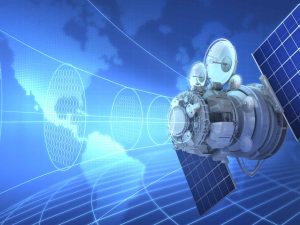VSAT and Satellite Communications Applications

Course Overview
This course is designed for individuals who wish to advance their knowledge in VSAT applications, satellite communications (SATCOM), DVB, TDM, and ethernet applications.
The course starts off with a quick recap of SATCOM basics and goes on to explain the frequency bands used by LEO, MEO, and GEO satellites and how they are used in different scenarios such as PDH, SDH, ethernet and DVB. Participants will also learn how to ensure security in satellite systems and how to leverage satellite services to increase network efficiency through more efficient use of bandwidth.
Through lectures and case studies, participants will develop the advanced knowledge and skills required to plan, design, and optimize VSAT and satellite communications applications.
Target Audience
- 3G/4G/5G mobile network operators
- Enterprise customers who have VSAT applications
- Broadcasting companies that utilize satellite links
- Telecommunications companies (PTTs, Carriers)
- Satellite operators
- Internet service providers
- IT & system integration companies
- Multinational companies that rely on satellites
Duration & Training Format
- Classroom: 3 days
- LIVE Virtual: 21 hours
- A minimum of 8 or more participants is required for a Classroom session to commence.
- A minimum of 6 or more participants is required for a LIVE Virtual session to commence.
- LIVE Virtual courses can be conducted for 5 hours or 7 hours daily. Please note that the number of training days will be extended if you opt for 5 hours daily.
Upcoming Course Dates
10 – 12 Sep 2025 (Wed – Fri), GMT +08:00
If you are keen on attending the above scheduled course, please register your interest via our course enquiry form.
Course Objectives
At the end of the course, participants will be able to:
- Demonstrate a thorough understanding of the fundamentals of SATCOM, including frequency spectrum and satellite bands
- Apply knowledge of orbital mechanics, ground operations, space operations, etc.
- Apply multiple access techniques in SATCOM
- Understand and address free space loss and atmospheric impairments
- Identify and apply VSAT applications such as DVB, PDH, SDH and Ethernet
- Configure carrier ethernet and mobile backhaul solutions
- Understand and apply satellite navigation, network synchronization and timing concepts
- Understand the principles of Voice over IP (VoIP) in SATCOM
- Understand the principles and techniques of satellite news gathering
Course Outline
- Recap of SATCOM Fundamentals
- Characteristics of LEO, MEO, GEO Satellites and their Pros and Cons
- Satellite Frequency Bands and their Pros and Cons
- Multiplex Schemes: FDMA, TDMA, CDMA, SCPC, MCPC, etc.
- Linear and Circular Polarization
- Satellite Beams: Global, Regional, Spot Beams, Steerable Beams
- EIRP and G/T
- Link Planning: Transmit Power, Antenna Gains, Free Space Loss, Receive Power, etc.
- Transponder: Carriers, Channel Assignments, Bent Pipe, Regenerative Type
- VSAT Applications: PDH, SDH, DVB and Ethernet
- Evolution of DVB Standard
- Interfaces on Satellite Modem
- Legacy Interfaces: PDH vs SDH
- TDM vs Ethernet Interfaces
- OAM
- Mobile Backhaul
- Satellite News Gathering
- Security in Space
- Increasingly Sophisticated Threats
- Cybersecurity for tomorrow’s Space Industry
- Satellite Industry Leadership in Cybersecurity Collaboration
- ITU’s Global Cybersecurity Agenda
- Core Principles for Cybersecurity
- Major Security Issues
- Classification of the Major Scientific Contributions dealing with Security in SATCOM
- Integration of NTN with TN and New Security Environment
- Security Challenges in Space and Ground Segments
- IPSec Architecture
- Potential Security Solutions
- Security Key Management
- Satellite Solutions for 4G/5G
- Satellite Benefits for 5G
- Bandwidth and Latency Requirements of 5G Use Cases
- 5G Use Cases: eMBB, uRLLC, mMTC
- Technical and Standardization issues
- Satellite vs Other Media
- Importance of Satellite in 5G
- Evolution of Mobile Generations: 1G/2G/3G/4G/5G
- Architecture of 4G and 5G Networks
- Ethernet Interfaces for Mobile Backhaul
- Role of MEF, ITU AND IEEE
- Standardization Services
- Service Operations, Administration and Management (SOAM)
- Reliability
- Point-to-point and Multipoint Services in SATOM
- Quality of Service and Class of Service
- Performance Management
- Characteristics of VoIP
- Challenges of VoIP over Satellite
- QoS and Traffic Prioritization
- Compression Techniques
- Bandwidth Requirement
- Bit Rate Calculations
- Transponder Management
- VoIP Protocols
- International Private Leased Circuit (IPLC)
- International Ethernet Private Line (IEPL)
- Features of IPLC and IEPL
- VPN Via Satellite
- Satellite E-Line and EVPL
- GPS, GLONASS, Beidou, Galileo, etc.
- GNSS-1 vs GNSS-2
- Global Satellite-Based Augmentation Systems
- Comparison of Systems
- GPS Frequencies of Systems
- GPS Frequencies and Orbits
- Positioning, Navigation and Timing
- Network Synchronization in Communication Networks
- Clock Stratum
- Translation of Time from GPS
- GPS Signal Concerns and Security Issues
- NTP vs PTP (IEEE 1588 v2)
Note: A Certificate of Completion will only be issued upon achieving at least 75% attendance for the course.
Pre-requisites
Participants must have completed the ‘An Overview of Satellite Communications‘ course before taking this course. This course assumes and builds on participants’ foundational understanding of SATCOM.


